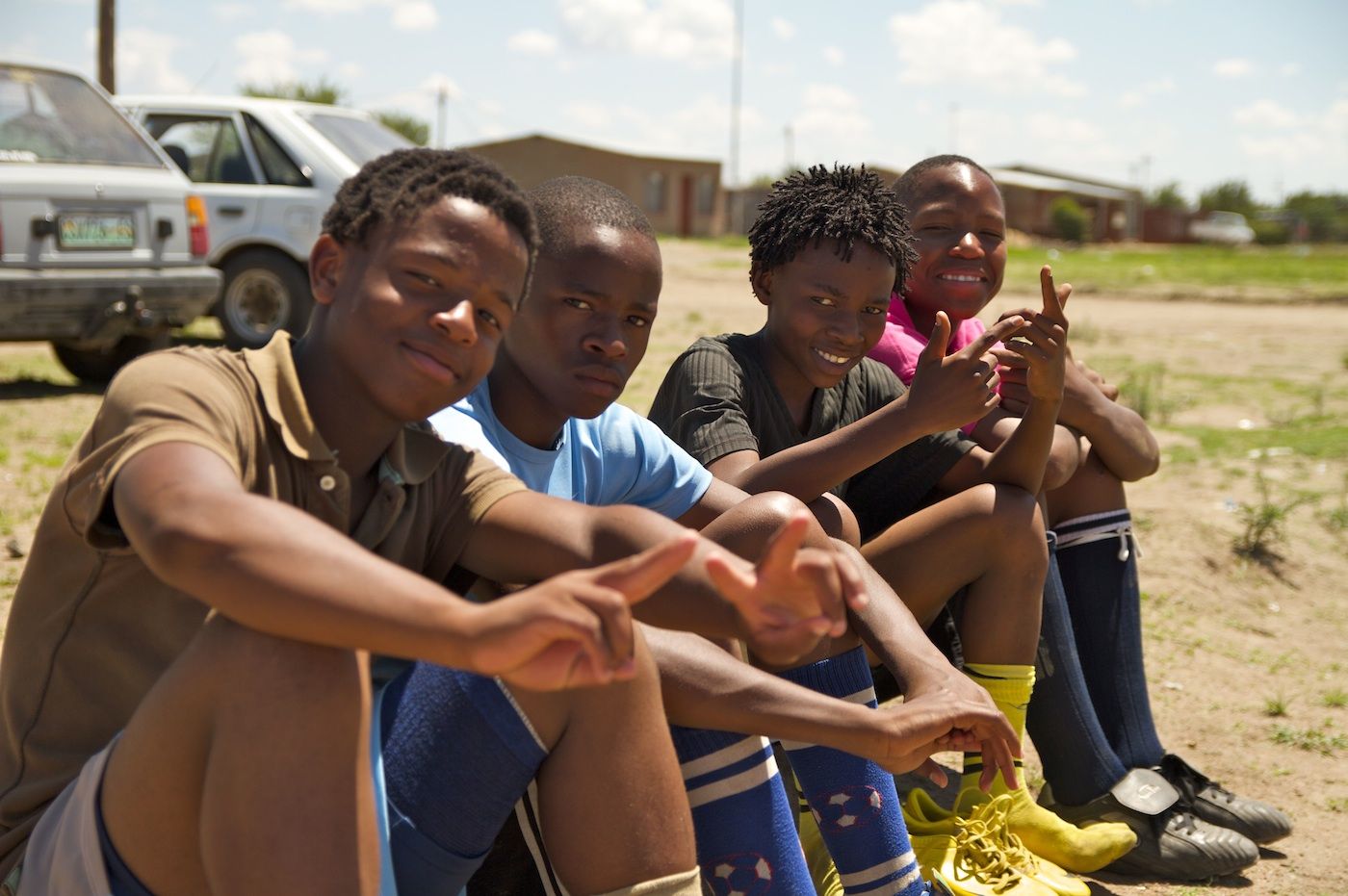The cock crows at 4:00 in the morning. I lay awake listening to rain drops rap against the corrugated steel roof, trying desperately to fall back to sleep. But every time my head gets heavy, the roosters thwart any hope. My mind conjures thoughts of my own bed, or at least a bed that I do not have to share with my fixer. Then I remember the two Tumahole Township girls sleeping on the cement floor in the other room, giving up their bed so that their guests feel welcome. Tired of trying to sleep, I force my feet to the floor and my body upright. I am up.
I reach for my favorite flannel shirt, which has been sweated through and re-worn for the past three days. I probe the floor with my feet looking for my sandals. Thato, my fixer, is still asleep. Sandals on, I slowly crack the door and slip into the hallway. The four women we are staying with are already up and chatting quietly in their room. They vary in age, shape and wisdom, but share the same jovial attitude and organic beauty.
I step out into the pressed-dirt yard and morning light. A few stray rain drops alight on my forehead and shoulders. I cross the yard to the outhouse. After, I duck into the family's corrugated steel shed that extends just beyond the outhouse. For eight years, six of them lived in this eight-by-twenty foot 'zozo' or shack in Sesotho while their house was being built. There is no electricity, no sink, just a few broken wooden chairs and a rusted coal-stove where the family used to prepare their meals. I am told that there were three rooms, separated by curtains. The floor is cement. The youngest girl, Nobuhle, whom they call Nonki, often spends afternoons in here re-teaching the day's school lesson to the younger kids from the neighborhood.
Although this family's house has now been built, it is common to see many properties upon which there is a house under construction and a family living in a steel shack behind the house. After living in the shack for a number of years, families may eventually acquire enough money to finish these modest, cement homes. Not all of Tumahole is like this. There are houses with running water, electricity, indoor bathrooms and satellite TV, but these are few and far between.
Unfortunately, not as scarce are the fringe neighborhoods of shanties and shacks. They are built of wood and mismatched pieces of corrugated steel, generally by the homeowners themselves, and painted with rust and motley colors. Some do not even enjoy the luxury of a window. To reinforce the house against the elements, a porridge-like mush is mixed from old newspapers and water and used to plug the cracks and shortcomings of the steel panels. Some of these houses have no electricity; others do not even have a water source nearby, forcing people to walk into the center of town to get water.
Most of the roads are paved in the center of town, but only rocky, uneven dirt roads extend to the outskirts. The many construction sites in the township indicate economic progress, but it is difficult to know when any project will be completed. A soccer stadium promised by the government in the spirit of the World Cup has been under construction for three years and is still unfinished. Some of the stands have been fitted with plastic seats, but the dirt field at the center still remains uneven and piled with mounds of rubbish and excavated rocks.
Talking to the neighbors, I learn that politicians win votes by promising to build houses. But once elected, the promises are not kept.
I leave the shed to find Itumeleng, whom they call Tumi, collecting his school shirt and trousers from the barbed wire fence where he had hung them to dry. I follow him inside and watch as he irons them on the dining room table. I sit on the worn-leather couch collecting my thoughts and jotting down some ideas when Thato enters. I set aside my notebook when he tells me that a man has come to fetch us for a meeting of the town's youth organization. Unemployed yet inspired by the World Cup, the members of this organization have banded together to try to do something positive for the community.
I grab my coat and step out into the day.
